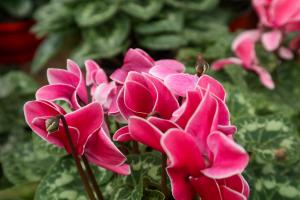Can Cactus Potting Mix Work for Planted Aquarium?
If you are a beginner in aquarium hobby, you might wonder if you can use cactus potting mix for your planted aquarium. The answer is not straightforward, as it depends on some factors.
The Composition of Cactus Potting Mix
Cactus potting mix is a blend of soil, sand, vermiculite, and similar materials, with an emphasis on good drainage and aeration. It usually contains a lot of organic matter, such as peat moss or coconut coir, to retain moisture and nutrients.
In essence, cactus potting mix is designed for plants that grow in arid and sunny environments, where rainfall is low and soil dries quickly. These plants need a substrate that can hold some water but also allow it to drain fast, preventing root rot and fungal diseases.
In an aquarium, the situation is different. Aquatic plants grow in water, not soil, so they don't need a substrate to anchor their roots. However, they do need a surface to attach themselves to, such as rocks, driftwood, or special planting substrates like gravel or sand.
The Challenges of Using Cactus Potting Mix in an Aquarium
While cactus potting mix may seem similar to aquarium substrates at first glance, it poses some challenges when used in a planted aquarium. Here are some of them:
It may contain harmful chemicals or pollutants. Cactus potting mix is not intended for aquatic use, so it may contain fertilizers, pesticides, herbicides, or other substances that can harm fish or invertebrates. Even if the mix claims to be "organic" or "natural," it does not mean it is safe for aquatic life. Always check the ingredients and consult with experienced aquarists before using any new substrate.
It may alter the water chemistry or pH. Cactus potting mix may contain minerals or salts that can dissolve in water and affect its composition. For example, some mixes have high levels of calcium, iron, or magnesium, which can buffer the pH or hardness of the water. This can be detrimental to some species of fish, such as those that prefer soft, acidic water (like tetras, angelfish, or discus). Additionally, some mixes may release tannins or other organic compounds that can discolor the water and lower its clarity.
It may not provide enough nutrients or support for aquatic plants. Cactus potting mix is not formulated with the needs of aquatic plants in mind. While it may contain some organic matter or minerals that can benefit plants, it may lack essential nutrients like nitrogen, phosphorus, or potassium that are necessary for healthy growth. Moreover, its texture may not be suitable for anchoring plant roots or promoting beneficial bacteria that break down waste and prevent algae growth.
It may become too compact or muddy over time. Cactus potting mix can become dense or muddy when wet, which can suffocate plant roots or create anaerobic conditions that promote harmful bacteria. It may also retain too much water, making it difficult to maintain stable water conditions and preventing proper gas exchange. In contrast, aquarium substrates like gravel or sand are designed to provide adequate porosity and drainage while preventing compaction.
Conclusion: Is Cactus Potting Mix Suitable for Planted Aquarium?
In light of the above challenges, it is not recommended to use cactus potting mix in a planted aquarium. While it may work for some hardy plants, it can pose risks to fish, shrimps, and other aquatic life, as well as create maintenance issues for the aquarist. Instead, it is best to use substrates that are specifically formulated for aquatic plants, such as gravel, sand, soil, or specialized substrates that contain the right nutrients, structure, and microbial ecosystem. By doing so, you can ensure the health and beauty of your planted aquarium, without compromising on water quality or safety.

 how many times do yo...
how many times do yo... how many planted tre...
how many planted tre... how many pine trees ...
how many pine trees ... how many pecan trees...
how many pecan trees... how many plants comp...
how many plants comp... how many plants can ...
how many plants can ... how many plants and ...
how many plants and ... how many pepper plan...
how many pepper plan...






























